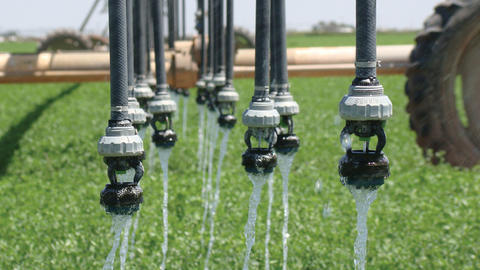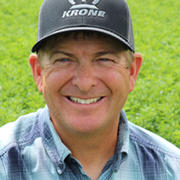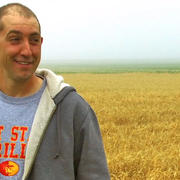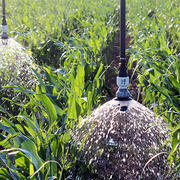We’ve talked a lot about close spacing and LEPA irrigation methods in the past year as drought continues to wreak havoc across farmland in the United States. At Senninger, we believe that LEPA and close spacing methods are a real and tested solution for growers in water-scarce regions and we will continue to promote them as part of our water and energy savings solutions.
Among those already familiar with LEPA or close spacing, a question surfaces though.
What's the difference between the two methods?
At a glance, close spacing and traditional LEPA irrigation seem virtually the same. Both methods require nearly identical management practices and provide similar benefits.
In traditional LEPA systems, applicators are mounted far apart so they can irrigate every other furrow. Less than half of the soil surface is wetted to reduce evaporation losses as much as possible. True LEPA systems use low-pressure bubble heads to deposit water directly into furrows just 8 to 18 inches above the ground. With the heads closer to the crop, the water avoids the hitting leaves. Water does not come in contact with plants and fruit susceptible to water-borne diseases and nearly all of it is absorbed by the soil.
LEPA is primarily used on relatively flat fields and it also requires circular planting to keep the sprinkler centered in the furrow. Circular rows help increase uniform water disbursement and reduces runoff.
According to researchers at Texas A&M, at least 20% more water will reach the soil surface compared to conventional spray heads, which are very susceptible to high wind speed, low relative humidity, temperature, and evaporation losses. For a grower with a center pivot operating at 800 GPM, this means they can get an extra 140 to 180 GPM to the ground and the crop.
Traditionally, bubblers were mounted so they would wet every other furrow. Less than one-half of the soil surface was wetted, which dramatically cut surface soil evaporation.
So how is close spacing different?
Growers using close-spacing methods place applicators on every row to wet the entire soil surface. This means they are usually just 30 inches apart. With the help of the residue left behind, they can fully fill the soil profile during pre-watering and achieve more uniform root zone coverage without worrying about surface soil evaporation.
The residue left over from previous growing seasons suddenly becomes more than just a buffer to prevent runoff and erosion. It protects the water applied by keeping the soil cool and keeping the water in place until the soil is ready to soak it. Previous root channels left untilled also help water channel down below the soil surface. Conventional tillage dries out the soil, but strip-till and no-till farmers retain an additional 2 to 4 inches of soil moisture depending on the season.

Farmers in the High Plains are modifying traditional LEPA practices and mounting bubblers with just 30 inches of space between heads.




